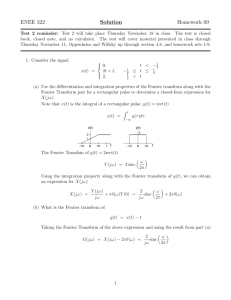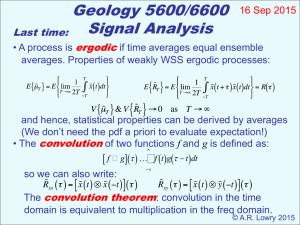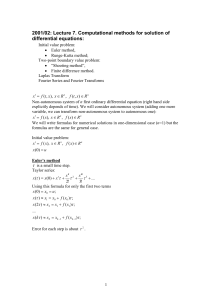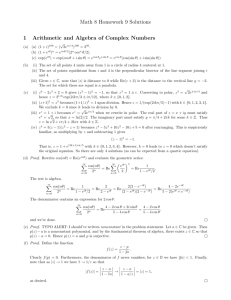HW 4
advertisement
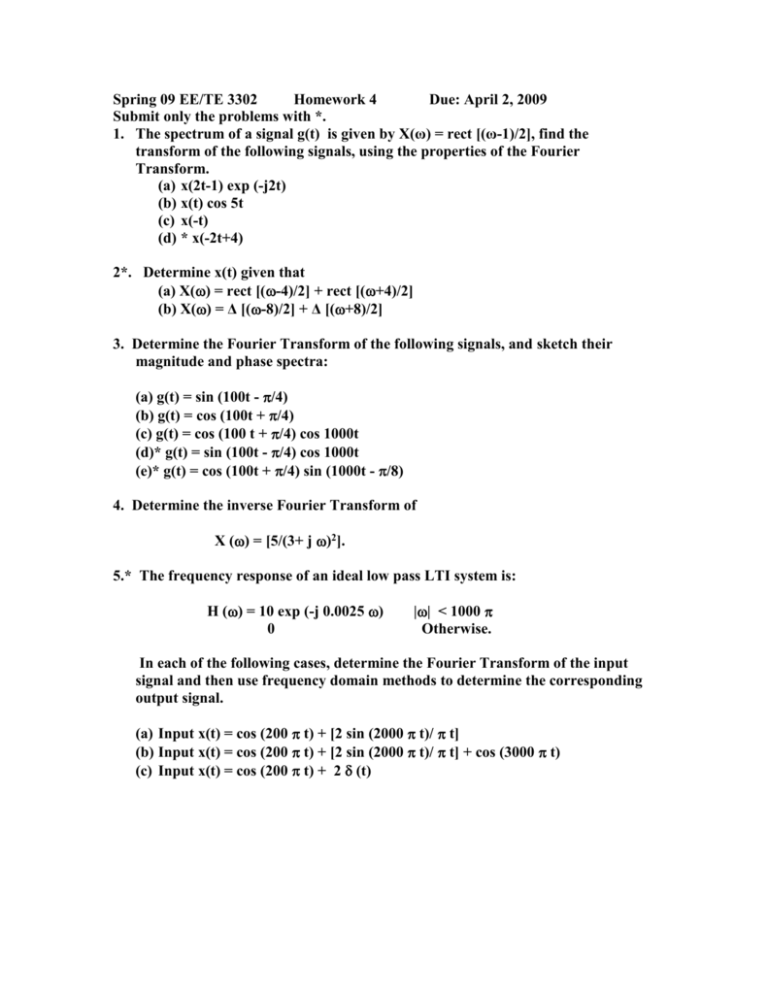
Spring 09 EE/TE 3302 Homework 4 Due: April 2, 2009 Submit only the problems with *. 1. The spectrum of a signal g(t) is given by X(ω) = rect [(ω-1)/2], find the transform of the following signals, using the properties of the Fourier Transform. (a) x(2t-1) exp (-j2t) (b) x(t) cos 5t (c) x(-t) (d) * x(-2t+4) 2*. Determine x(t) given that (a) X() = rect [(-4)/2] + rect [(+4)/2] (b) X() = Δ [(-8)/2] + Δ [(+8)/2] 3. Determine the Fourier Transform of the following signals, and sketch their magnitude and phase spectra: (a) g(t) = sin (100t - /4) (b) g(t) = cos (100t + /4) (c) g(t) = cos (100 t + /4) cos 1000t (d)* g(t) = sin (100t - /4) cos 1000t (e)* g(t) = cos (100t + /4) sin (1000t - /8) 4. Determine the inverse Fourier Transform of X () = [5/(3+ j )2]. 5.* The frequency response of an ideal low pass LTI system is: H () = 10 exp (-j 0.0025 ) 0 || < 1000 Otherwise. In each of the following cases, determine the Fourier Transform of the input signal and then use frequency domain methods to determine the corresponding output signal. (a) Input x(t) = cos (200 t) + [2 sin (2000 t)/ t] (b) Input x(t) = cos (200 t) + [2 sin (2000 t)/ t] + cos (3000 t) (c) Input x(t) = cos (200 t) + 2 (t) 6. The input and the output of a relaxed (i.e. initial conditions are zero), stable and causal LTI system are related by the differential equation y’’(t) + 6 y’(t) + 8 y(t) = 2 x(t). (a) Find the impulse response of this system. (b) What is the response of this system if x (t) = exp(-2t) u(t)? 7. A causal and stable LTI system has the frequency response: H () = [(j + 4) / (6 - 2 + 5 j)]. (a) Determine the differential equation relating the input x(t) and the output y(t) of this system. (b) Determine the impulse response h (t) of the system. 8.* A signal x(t) is input to a relaxed linear time invariant system with the spectrum H(ω) to produce an output y(t). Given the following x (t) = δT(t) and T= 0.1 second H(ω) = [rect (ω/60π).] exp (- j ω/40) determine the output y(t). Sketch the spectrum Y (ω).








